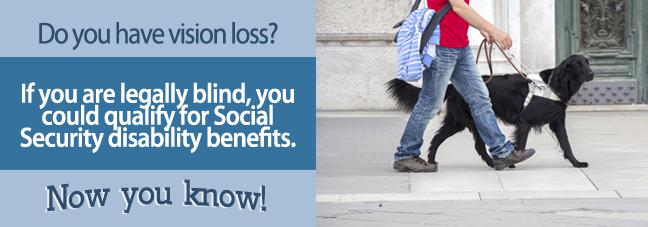In 2017, the Social Security Administration (SSA) received more than 2.1 million disability claims. The SSA approved just 35 percent of the disability applications. If you suffer from vision loss, there is an almost two in three chance that your application might come back denied by the SSA. This means you might have to file an appeal with the SSA, with the first step of the process called reconsideration.
The SSA has a team of healthcare professionals that review disability claims and appeals. Referring to a medical guide called the Blue Book, the team of healthcare experts at the SSA make a decision on your vision loss claim. Section 2.00 of the Blue Book lists three possible ways the SSA should consider approving a disability claim or appeal.
To bolster your appeal, you should follow three tips:
- File additional medical evidence
- Complete a Residual Functional Capacity (RFC) assessment
- Request a free case evaluation
File Additional Medical Evidence
There are subsections of Section 2.00 of the Blue Book that describe how claimants might be eligible for disability benefits.
- 2.02: The loss of Central Visual Acuity
- 2.03: Contraction of the visual field in the better eye
- 2.04: Loss of visual efficiency, or visual impairment, in the better eye
Vision loss is a medical condition that often gets worse as time passes. Because the original claim decision process takes between three and five months, the vision tests you took before submitting the original disability application might come out differently when the time comes to file a disability appeal.
This means you should submit the most recent vision tests with the disability appeal if the tests demonstrate that your vision loss has gotten worse.
The SSA places more emphasis on the results of your vision tests than any other factor involved in making disability benefits decisions. Make sure you provide the SSA with more medical evidence of your vision loss the second time around. A statement made by your employer that verifies how vision loss has negatively impacted your work performance is crucial to submit as well.
Complete an RFC Assessment
At Disability Determination Services (DDS), which is a branch of the SSA, a medical consultant can conduct an RFC to determine the level of physical activity you can participate in while at work. The medical consultant reviews your medical records, as well as the notes submitted by your physician concerning your vision loss.
Special attention is paid by the DDS medical consultant to your doctor’s recommendation on the type of work you can complete. For example, if your physician states that you should not stand or walk more than two hours per day, the result of your RFC should be to stick with work that involves sitting in a chair.
For vision loss, the RFC focuses on what you can see at varying distances.
Request a Free Case Evaluation
Going through the disability appeals process can be overwhelming. After all, there are four steps to the process, with each step requiring more evidence and a stronger persuasive argument to get an appeal approved.
Working with a Social Security lawyer does not ensure you an approved disability appeal, but it certainly improves your chances of receiving financial assistance for vision loss.
One of the most effective ways to prepare for a disability appeal is to request a free case evaluation. Your Social Security attorney reviews your case to determine how to make the disability appeal more convincing.
